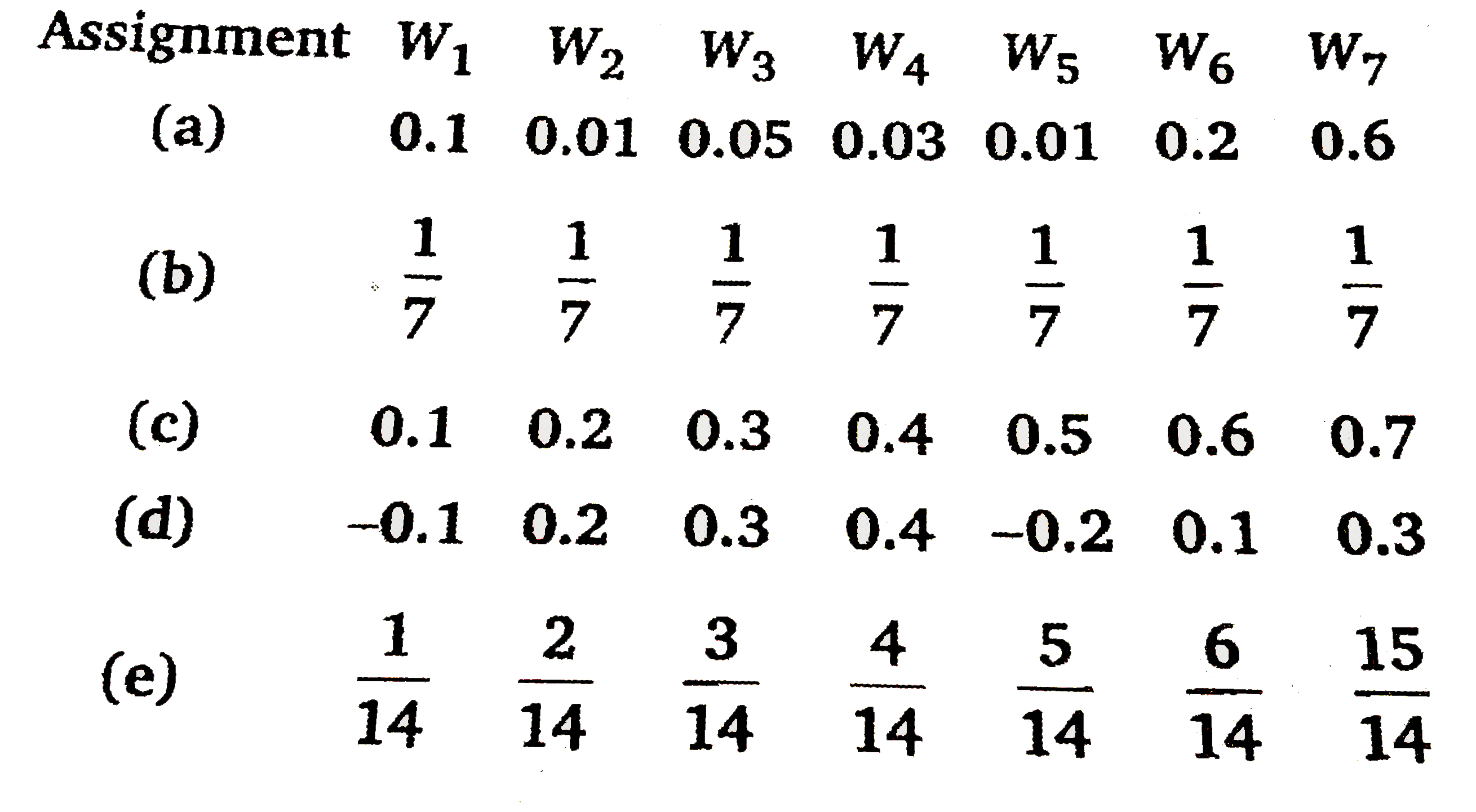If two fair dices are thrown and digits on dices are a and b, then find the probability for which ωab=1, (where ω is a cube root of unity). Solution in Tamil
The correct Answer is:59
Total number of cases n(S) = 36
Since ωab = 1, ab must be multiple of 3.
So, at least one of a and b must be multiple of 3.
If none of the dices shows 3 or 6, number of cases is 4×4=16.
So, number of cases in which at least one of the dices shows 3 or 6 is 36 - 16 = 20.
∴ Required probability = 2036=59
Topper's Solved these Questions
- PROBABILITY I Book:CENGAGEChapter:PROBABILITY I Exercise:Exercise 9.3
Explore 7 Videos
- PROBABILITY I Book:CENGAGEChapter:PROBABILITY I Exercise:Exercise (Single)
Explore 46 Videos
- PROBABILITY I Book:CENGAGEChapter:PROBABILITY I Exercise:Exercise 9.1
Explore 6 Videos
- PROBABILITY AND STATISTICSBook:CENGAGEChapter:PROBABILITY AND STATISTICSExercise:Question Bank
Explore 24 Videos
- PROBABILITY IIBook:CENGAGEChapter:PROBABILITY IIExercise:JEE Advanced Previous Year
Explore 25 Videos
Similar Questions
AandB are two candidates seeking admission in ITT. The probability that A is selected is 0.5 and the probability that AandB are selected is at most 0.3. Is it possible that the probability of B getting selected is 0.9?
View SolutionA sample space consists of 3 sample points with associated probabilities given as 2p,p2,4p−1. Then the value of p is
View SolutionWhich of the following cannot be valid assignment of probabilities for outcomes of sample space S={W1,W2,W3,W4,W5,W6,W7}

View SolutionIf two events A and B are such that P(Al)=0.3, P(B)=0.4 and P(A∩Bl)=0.5, then P(BA∪Bl) equals
View SolutionA signal which can be green or red with probability 45and15 respectively, is received by station A and then and 3 transmitted to station B. The probability of each station receiving the signal correctly is 34 If the signal received at station B is green, then the probability that the original signal was green is (a) 35 (b) 67 (c) 2023 (d) 920
View SolutionIf two fair dices are thrown and digits on dices are a and b, then find the probability for which ωab=1, (where ω is a cube root of unity).
View Solutionमाना कि ω इकाई का एक सम्मिश्र घनमूल है जहाँ ω≠ है। एक निष्पक्ष पाँसा तीन बार उछाला जाता है। यदि r1,r2 और r3 पाँसे के उछाले जाने पर प्राप्त अंक दर्शाते है तो ωr1+ωr2+ωr3=0 होने की प्रायिकता है-
View SolutionEvaluate: ∣∣ ∣ ∣∣1111ω2ω1ωω2∣∣ ∣ ∣∣ (where ω is an imaginary cube root of unity ).
View SolutionIf ω is a complex cube -root of unity and A'=[ωω] and B'=[1ω], then: AB=
View Solutionयदि दो निष्पक्ष पासों को फैंका जाता है, तब इस बात कि सप्रतिबंध प्रायिकता क्या है कि पहले पासे पर 6 आए, जबकि यह दिया हुआ है कि पासों पर आए अंकों का योगफल 8 रहे?
View SolutionTwo dices are rolled and numbers r1 and r2 are chosen. Let 1+ωr1+ωr2=λ (where ω is a complex cube root of unity). Then
View Solution(1+w)7=A+Bw where w is the imaginary cube root of of a unity and A,B∈R, find the ordered pair (A, B).
View Solutionमाना कि ω, इकाई का एक सम्मिश्र धनमूल हैं जहां ω≠1 एक निष्पक्ष पांसा तीन बार उछाला जाता है। यदि r1,r2 एवं r2 पांसे के उछाले जाने पर प्राप्त अंक दर्शाते है तो ωr1+ωr2+ωr3=0 होने की प्रायिकता निम्न है
View Solutionमाना ω इकाई का एक सम्मिश्र घनमूल है, जहाँ ω≠1. एक निष्पक्ष पाँसा तीन बार उछाला जाता है। यदि r1,r2 एवं r3 पाँसे के उछाले जाने पर प्राप्त अंक दर्शाते हैं, तो ωr1+ωr2+ωr3=0 की प्रायिकता निम्न है
View SolutionIf two fair dices are thrown and digits on dices are a and b, then find the probability for which ωab=1, (where ω is a cube root of unity).
View Solution